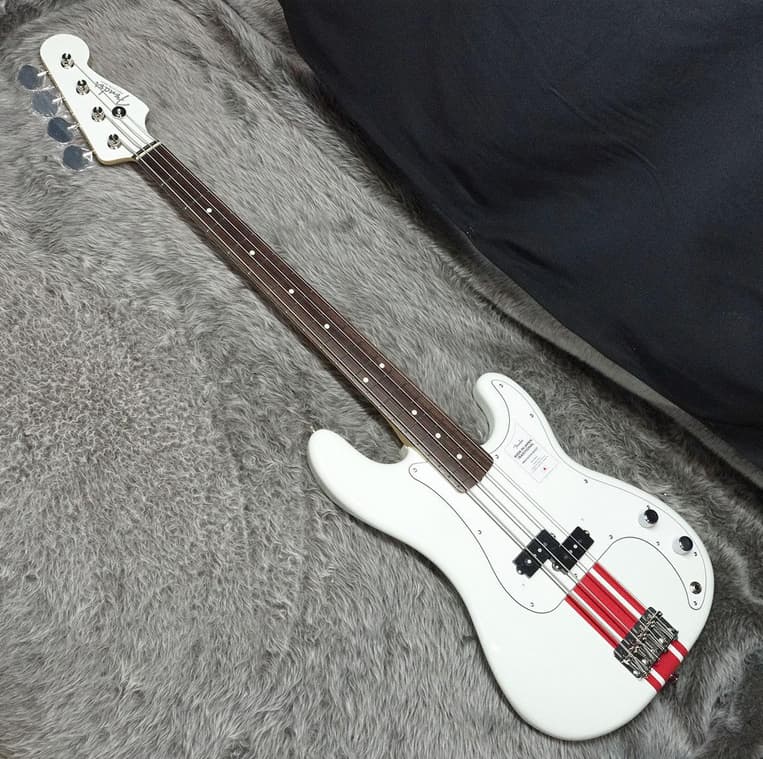I buy based on looks.
If a bass doesn’t catch my eye, I’m not even going to pick it up and plug it in.
Personally I would begin with feel. If the neck profile doesn’t work for someone or if the bass doesn’t balance well there’s less likelihood of it being played as often. Necks swaps can be costly or in the case of a set neck or neck through impossible to achieve.
Swapping pickups or preamps in an active bass is fairly easy to do or have done for you by a tech. I’ve done pickup swaps in quite a few of my basses and guitars installing the ones I prefer for the tonality I’m after. With a decent soldering iron and a wiring diagram is pretty easy.
So it’s both for me but in that order. Looks don’t matter all that much to me since I play PBass or JBass type body styles. I currently own four basses all in different finishes and I don’t have any preference as far as fingerboard material one over another. Three are maple one is rosewood. Outside of essential comfort it’s the string type and the pickups that give a bass it’s “voice”.
Even easier in a passive, but active is really not difficult either, yeah.
Yeah. For me, tone is a distant third on the list, behind feel (#1) and looks (#2), and tone is pretty far below looks. It’s just so easy to change tone to be what you want.
When I demo instruments in stores and they ask what amp I want I usually just say “no amp is fine for now.” All I am looking for is to gauge the feel, look, and build quality of an instrument; I can easily fix the rest in so many ways. I usually just use the amps as a final check on the electronics.
It’s much much harder to fix feel and look than tone…
Personal, I’d go look first, then feel next, then tone.
It depends on which senses your mind prefers when doing decision making. A person with high sensory sensitivity mostly prefers touch and feel over all other senses; on the contrary imagine a person with high visual sensitivity.
Ultimately, I can tell you this: You don’t choose the Bass, the Bass chooses you.
![]()
![]()
![]()
Wish y’all the Bass ![]()
They are close for me. If I don’t like the look, I’m not going to pick it up. If I don’t like the feel, it’s never getting played and will drive me crazy.
I owned another color of one of my current basses and sold it because I just can’t vibe with brown sunbursts. Otherwise it was a top tier bass and one of my favorite I have ever picked up. And when I sold it, I knew I was going to buy another at some point. Now I own it in Matte Black and am extremely happy with it ![]()
All of my basses just happen to have great tone too, but I did not select for this. If they didn’t, I would just fix it in the DAW. One of the big things I have learned is just how versatile modern music production tools are in shaping sound.
For me:
looks first. If it looks good then I’ll pick it up
feel second. If it feels right, it will get played
tone third. It’s amazing what a pedal or a preamp can do!
I have a Spector bass that looks cool, sound good, but really doesn’t ‘feel’ right, despite a full set up. It’s getting sold this coming weekend… My other Spector looks great, feels great and sounds monster…it gets played.
The Steinberger is freakin’ cool, if you’re an 80s kind of person ![]() It also is lovely to play, despite the questionable standing ergonomics.
It also is lovely to play, despite the questionable standing ergonomics.
And the Dingwall? It simply rocks ![]()
I had a good chance to make a comparison of similar basses the other day.
I have a Harley Benton Bass VI which I have modded with a whammy and strangle switch to emulate the Squier/Fender original.
I had not had a chance to compare the two at all.
Finally the local shop got a Squier Bass VI in and I was able to fondle it while it was being set up.
Now I really like the HB, feels good in the hand and sounds good to.
The Squier sounded ok, making allowances for not being properly set up and having the standard light strings.
But I found that it was not as comfortable for me in the hand 9or rather on the knee in this case) and I also found that my $5 strangle switch sounded the same as the one on the Squier.
In all I am glad I got the less expensive option and played with it.
So in summary, more expensive is not always better, if you get something you want to hold and play you can always change the way it sounds or fix small details later.

